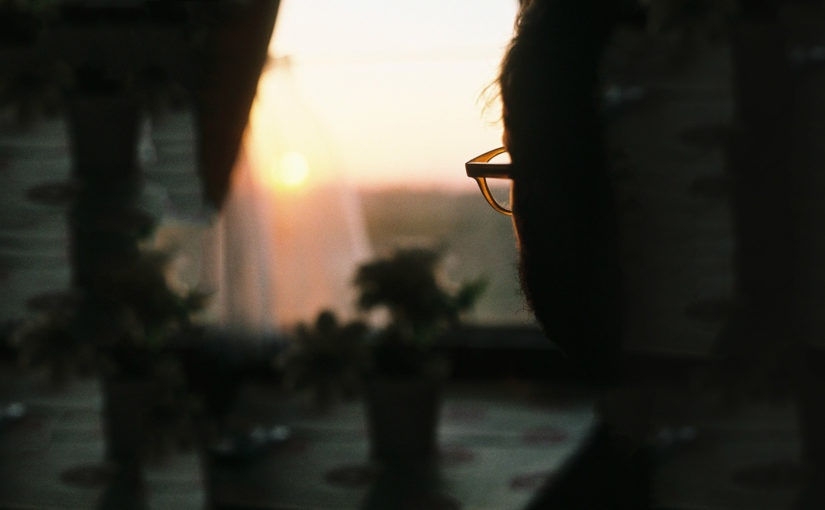It started with a lingering sadness. My head was a lead balloon, my arms pinned by sandbag hands.
“I get it now,” I thought, recalling people’s tales of depression weighting them to the bed. Anxiety, my lifelong companion, looked productive by comparison. At least anxiety offered a nervous attentiveness I could use to fuel overwork. This depression seemed to not bear any gifts.
I made a pact with myself. Before losing myself completely to this void, I would fight. I would do everything everyone says to do to beat depression. I would get regular sleep. I would exercise. I would spend time with people instead of closing myself off. I would stop treating sugar and caffeine like major food groups.
And little by little, the depression lifted. But when I read Michael Pollan’s book, How to Change Your Mind, and how psychedelics help the brain find new routes instead of spinning the same faulty circuit, I decided to try it—if only for insurance against the void.
I did a quick Google search for legal psychedelic sessions. One of the first results was for a group psilocybin retreat in the Netherlands, a rare refuge where psilocybin truffles were legal, hosted by the UK Psychedelic Society. I wasn’t keen on tripping balls with a bunch of randos from the internet. I wanted an experience like Pollan had. He found an underground therapist who watched over him, 1:1, as he journeyed. But I was a millennial, too lazy to network and find one of these elusive practitioners. I filled out their short application.
Day one of the retreat arrived. In the first of many group check-ins, they asked how people came to be here. One by one, we recounted our tale. “I read Michael Pollan’s book. Then I searched on Google. Now I’m here,” said two people before me. I repeated the story, my identity as a unique snowflake melting.
According to the facilitator, the groups used to attract people seeking novel experiences. Now, with the changing perception of psychedelics, more and more people arrived in search of healing.
I came hoping to chill out, trip, and bounce, but the facilitators—beautiful bright beings you couldn’t help but like—had other plans. They coaxed us through one group exercise after another. The activities prodded us into dropping our defenses. We gazed into each other’s eyes and traded closely held secrets. Reluctantly, I engaged. There was something healing about being a part of a group of people sharing openly. I became less trapped in my own little story. Maybe I didn’t need psychedelics. Maybe I just needed a dose of humanity, a sense of belonging and sharing the truth of what living feels like.
But all this authentic relating was a bit intense. My mounting anxiety about the trip was slowly being outpaced by a desire to be left alone.
At last, it was time. We settled onto mats and were handed eyeshades and cups of honeyed ginger tea to pour over our shrooms. Almost immediately, swirling shapes appeared over my vision. My heart beat rapidly, a chunk of icy fear growing in my chest. Clinging onto reality, I downed what I perceived to be the minimum dose.
I donned the black silk eyeshades and shut out the room. Closing my eyes, a universe appeared. It was dark, but there existed… something. Swirls of colored smoke entwined around the edges, framing a stage. Scene after scene of never-ending strife unfolded on this stage. Scenes of galactic wars were followed by scenes of factory-farmed animals who never knew anything but a cruel and wretched existence. In one scene I clung to my boyfriend as bombs exploded in our city.
There was no escape. I had been mistaken about life. In the end, this eternity of suffering was all there was.
I was vaguely aware I was tripping, that this kaleidoscope of horrors would end sometime, and that I had the option to never ever do this again. That sounded nice.
The facilitators were there for us in case we should want help navigating troubled waters. They so sincerely wanted to help. But… what could they do to stop all reality from ultimately being endless strife and darkness without redemption? There was no help. I was quite certain that this was all that existed.
Then a thought sprang into my awarenss: “The only good in the world is that which we create.” This sentiment was a spark that pierced the darkness. There was still the darkness, but now also the kindness created by those who care. I saw that there was still time for me to join that group and use my life to make life better for others. Such precious grace! I recommitted my life to altruism.
The golden rays of the setting sun filled the room. We were coming down. The facilitators took us on a walk, which turned out to be less of a walk and more a herding of newborn kittens with stumbling legs and awe-filled eyes.
Overhead, a giant sky was streaked with voluminous spiraling purple-blue clouds so majestic they looked shaped by Zeus himself. Everything looked realer than real, like we had taken the offramp from Flatland. Does the sky usually look like this? How could I not have noticed before?
It was October and the start of fall. The leaves on the ground stretched the gamut of sunset hues. How could the leaves fall so perfectly, with each square foot of ground like a Monet? Again, I wondered how I could have walked this path before without noticing such immaculate beauty.
At the sharing circle that night, I learned that I had one of the more trying experiences of the group. Some people had full-blown mystical experiences—love and light, deep insights, whatever.
I tried to contain my envy.
I wasn’t sure what my trip taught me. Ok, I should be a better person and use my life to improve others’. But it still seemed horrible and dark. It seemed clearer what the retreat taught me: how to be. I realized I spent my life rushing out of the inadequate present to some perfect future that… probably didn’t exist.
The retreat was all about taking time to be. At a group activity, I would think: “Okay, this must be the end of this activity.” No. “Now this must be the end.” No. “Now this must be the end.” Nope. With nothing else to do, I started leaning into the moment instead of rushing to the next.
Centered in the moment, I breathed deeply, feeling through my emotions. To my surprise, I discovered a whole store of very old emotions stuck waiting to be felt. I breathed into the emotions of myself as an alarmed infant, screaming alone. Maybe in my never-ending rush for accomplishment and self-acceptance, I had never learned to just be a human, breathing and feeling. Now I sat breathing in the moment as it was, with all its wants and faults and hurts.
I realized my anxiety was nothing more than a mounting queue of unfelt emotions, and that if I took the time I could breathe through the debt of feeling, like patiently combing through tangled knots of hair.
There were too many aspects of my life that changed around this time to objectively tell what effect the retreat had on me. But depression, my original motivation for the trip, didn’t visit me again.
A year later, as I once more waded through autumn leaves, I realized what that trip had been about: it was all of my fears about the world. All of my fears were offered to me so I could confront and integrate them. From that perspective, the trip looked less like a nightmare and more like a very kind offering. Maybe the world wasn’t so dark after all.
Many thanks to the UK Psychedelic Society for facilitating the retreat. While these retreats may not be right for everyone, I felt the retreat helped me become more emotionally integrated and more capable of contributing positively towards society.

